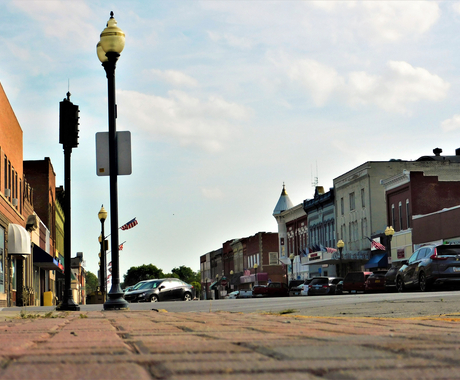Rhea Landholm, brand marketing and communications manager, [email protected] or 402.687.2100 ext. 1025
LYONS, NE - Today, the Center for Rural Affairs released a report that examines the negative fiscal and economic impacts of state income tax cuts in Kansas in recent years, and the potential for similar cuts to create similar budget crises and negative job growth in Nebraska.
“Legislators in Nebraska have already been publicly discussing their plans for cutting income tax rates during the next legislative session, with some saying such efforts should be coupled with property tax reform,” said Brian Hanson, Senior Rural Policy Associate at the Center for Rural Affairs. “Pairing the two efforts would break the state’s budget at a time we are projected to be facing a greater than $350 million shortfall in the next budget cycle. Nebraskans only have to look to our neighbors to the south to see the folly of such imbalanced plans.”
To view or download a copy of the Center’s report go to:
https://www.cfra.org/publications/kansas-self-inflicted-budget-wound-continues-bleed-out-providing-cautionary-tale.
In 2012, the Kansas Legislature cut income taxes on most businesses and for wealthier individuals, with promises of dramatic economic growth that would keep the state’s budget in balance. Since the cuts took effect, the Sunflower State has suffered budget shortfalls, credit downgrades, depletion of the state’s rainy day fund, school funding crises, and increases in both property and sales taxes.
“Proponents of income tax cuts in Kansas said that it would put the state’s economy in ‘overdrive.’ However, the results more closely resemble an old truck stuck in neutral slowly rolling backwards into the pond.”
Brian Hanson, Center for Rural Affairs
According to Hanson, the experience of Kansas should provide Nebraska’s leaders and citizens plenty of reasons to avoid going down the same reckless path, and to pursue a more balanced approach to tax reform. Much like their counterparts in Kansas, those in Nebraska pushing for income tax cuts promise that doing so brings economic and job growth, but the actual results of Kansas’ action make those promises ring hollow.
Hanson’s report shows that Kansas lags behind neighboring states, and the U.S. as a whole, in job growth. According to recent job numbers from the U.S. Bureau of Labor Statistics, Kansas had negative job growth from May 2015 to May 2016 (-0.35). Nebraska and other states in the region have maintained steady (albeit slow) job growth over the past few years.
Moreover, Hanson’s report demonstrates that tax cuts have not benefited all Kansans either. The former Kansas state budget director, Duane Goossen, finds that the combination of increased state fees, such as vehicle licensing, as well as property and sales taxes (increased to fill budget gaps created by the income tax cuts) have actually resulted in a net tax increase for people making less that $42,000 annually. The primary beneficiaries of the tax breaks are those making greater than $500,000 - who averaged a $25,000 tax break.
“Cuts in income taxes in Nebraska would likely also lead to both higher property taxes for landowners and more budget problems for Nebraska’s public schools,” Hanson explained. “When the Kansas state government cut its aid to schools as well as local and county governments due to shrinking income tax revenues, those entities became more reliant on property taxes and other fees to continue to perform their necessary services. A majority of Kansas counties have seen property tax levy increases since the 2012 income tax cuts, with 17 of the 20 highest increases occurring in rural counties.”
“Schools in Nebraska are already the 3rd most dependent on property taxes for funding in the country, as the state ranks 49th in funding per pupil in the nation,” concluded Hanson. “Rather than creating more budget problems, Nebraska leaders should focus on fully funding our state’s schools, roads, and other essential services.”


